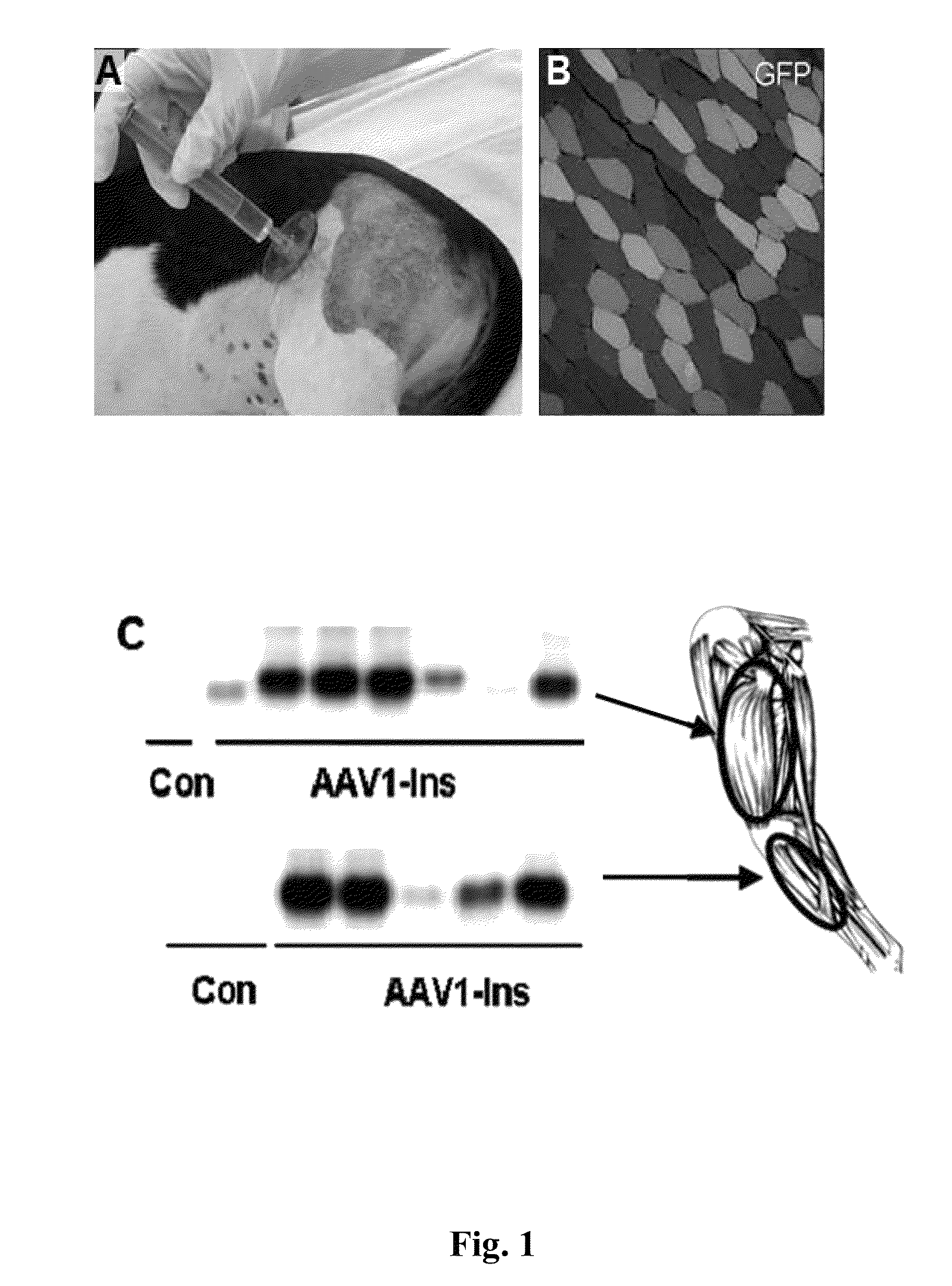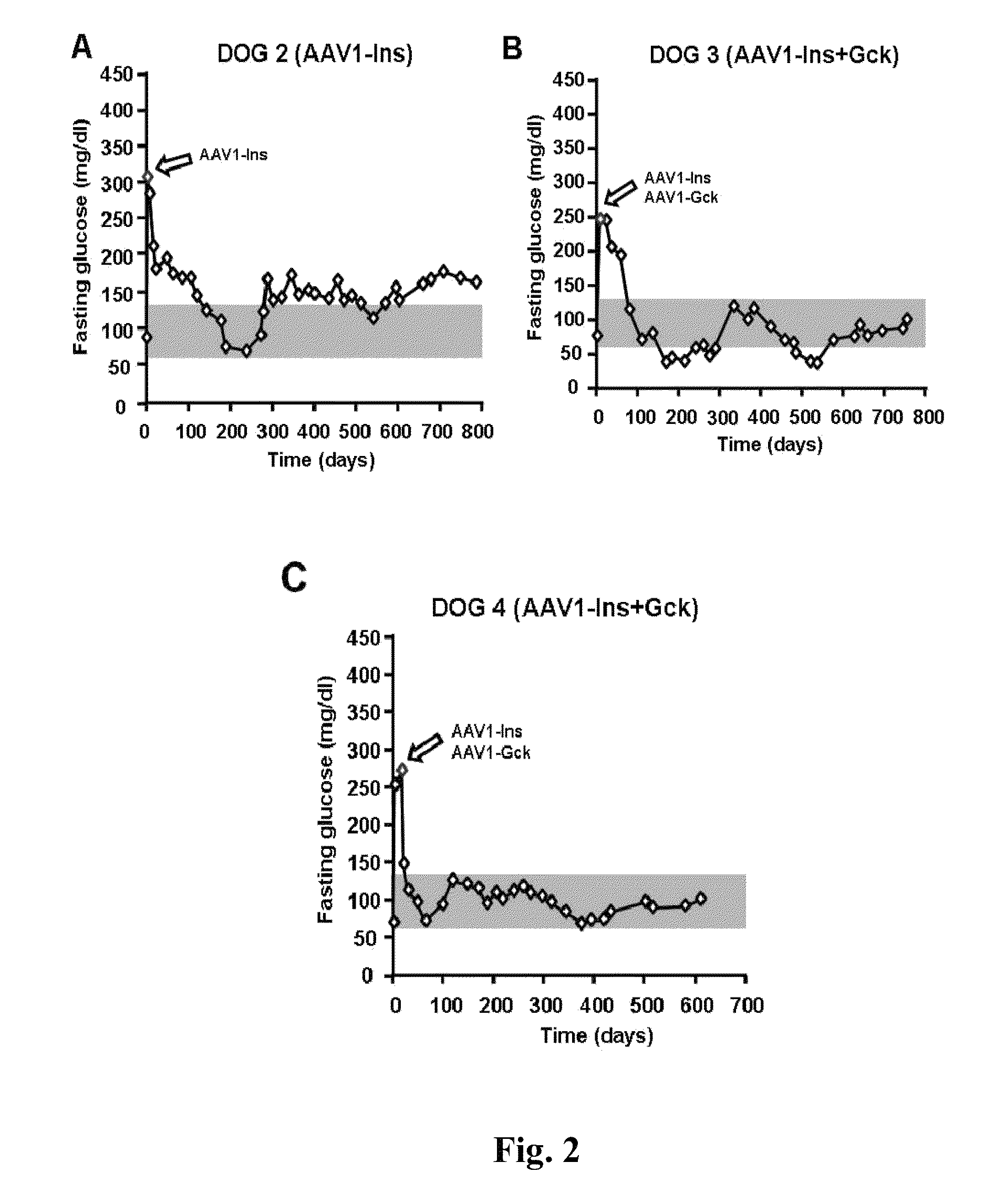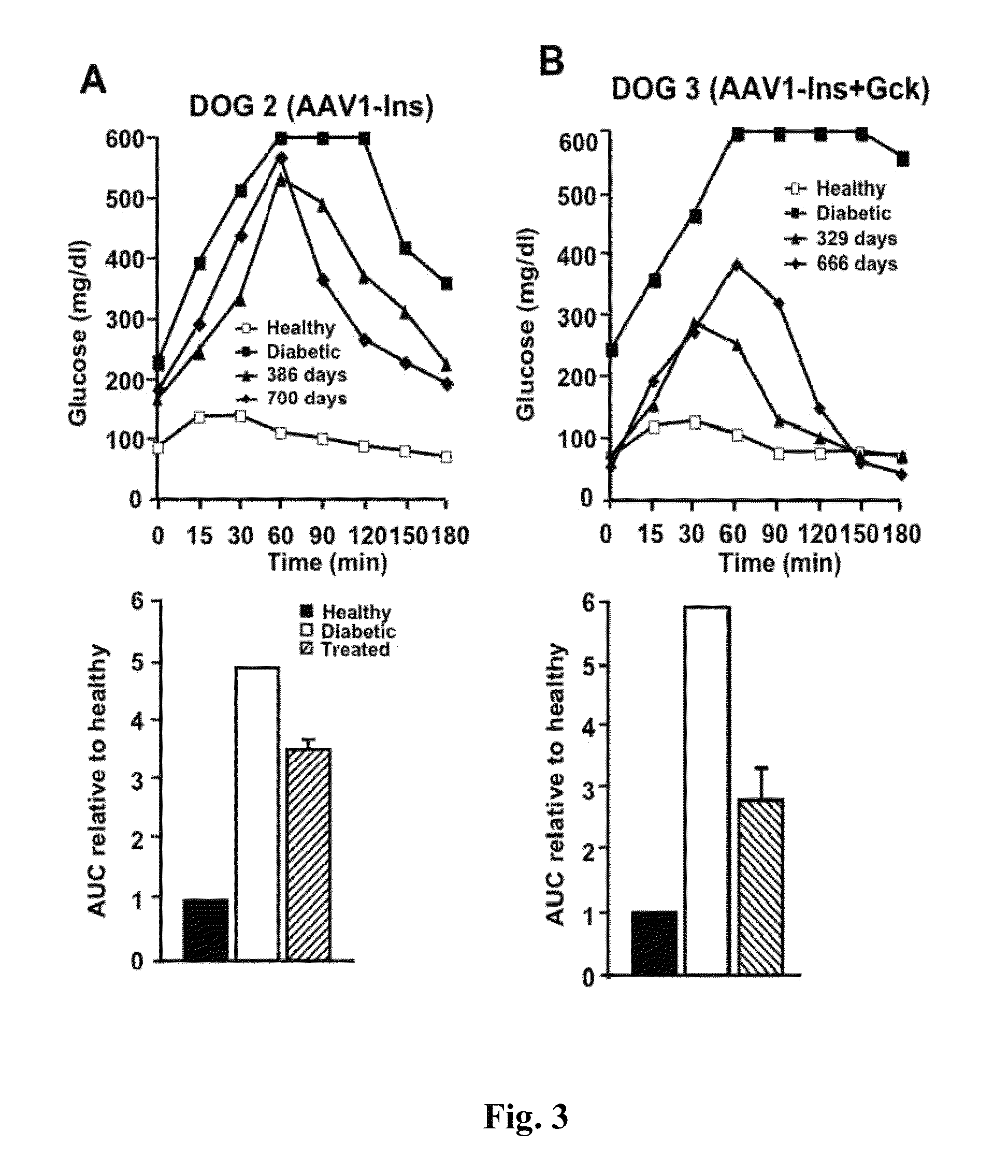Gene therapy composition for use in diabetes treatment
a technology for gene therapy and diabetes, applied in the direction of dsdna viruses, peptide/protein ingredients, transferases, etc., can solve the problems of severe microvascular, neurological complications, and difficulty in correct maintenance of normoglycemia, and achieve easy access, anti- diabetic hyperglycemia, and the ability to secrete proteins
- Summary
- Abstract
- Description
- Claims
- Application Information
AI Technical Summary
Benefits of technology
Problems solved by technology
Method used
Image
Examples
example 1
Ins+Gck Gene Transfer to Skeletal Muscle in Diabetic Dogs
[0088]Studies in diabetic Beagle dogs used a unique 5-point needle (FIG. 1A) to obtain widespread expression of a GFP reporter in skeletal muscle (FIG. 1B). Subsequently, 2.5×1012 vg / kg of AAV1-human Ins was injected into Dog 1 three days after diabetes induction with streptozotocin+alloxan (50). Low levels of circulating human C-peptide were observed 4 days later, peaking after 2 weeks in association with hypoglycemia. Dog 1 was sacrificed 21 days after treatment and strong insulin expression was detected in biopsies of the treated area (FIG. 1C). These results indicated that AAV vectors injected in multiple sites can efficiently deliver the insulin gene to widespread areas and that AAV-mediated gene transfer of insulin to a large animal model of diabetes was feasible, resulting in large amounts of insulin produced and secreted from the dog skeletal muscle.
[0089]Next goal of present invention was to determine the optimum dose...
example 2
Construction of Mutated Vectors for Efficient Expression of Human Insulin and Human Glucokinase
[0093]The coding sequence of either human insulin gene (hIns), containing specific sites for furin processing (36), or human glucokinase gene (hGcK) was modified to obtain codon mutated sequences (mhIns or mhGcK, respectively) following GeneArt procedures (48). GeneArt process involves avoiding cis-acting sequence motifs as:[0094]Internal TATA-boxes, chi-sites and ribosomal entry sites[0095]AR-rich or GC-rich sequence stretches[0096]RNA instability motifs[0097]Repeat sequences and RNA secondary structures[0098](Crytic) splice donor and acceptor sites in higher eukaryotes
[0099]The codon usage was adapted in GeneArt process to codon bias of Mus musculus genes. In addition, regions of very high (>80%) or very low (Mus musculus. GC-content adjustment made by the process of GenArt, prolongs mRNA half-life of the mutated construct achieved. The mutated human insulin and GcK genes described herei...
example 3
‘In Vitro’ Expression of mRNA from Mutated Trangenes
[0105]HEK293 cells were transfected with pAAVmhINS and pAAVmhGck using calcium phospate standard method. For experiments using AAV vectors, HEK293 cells were infected with AAV1mhINS and AAV1mhGck at different MOI (i.e. 10E4, 10E5, 10E6 vg / cell). Two days after transfection, cells were lysated with 1 ml of Tripure (Roche) and total RNA was extracted with RNAEasy Mini Kit (Qiagen). A Northern Blot was performed with 10 ug of RNA and hibridized with the mhINS (CDS of SEQ ID NO: 3) or the mhGck (CDS of SEQ ID NO: 4) cDNA, respectively (FIG. 6). Since these plasmids showed a high expression level of the gene of interest, adenoassociated type 1 viral vectors carrying these constructs were produced. Subsequently, AAV vectors were tested for their mRNA expression in HEK293 cells 96 h after transduction. High levels of transgene expression were detected by Northern Blot both with AAV1-mhINS and AAV1-mhGcK (FIG. 7).
PUM
 Login to View More
Login to View More Abstract
Description
Claims
Application Information
 Login to View More
Login to View More - R&D
- Intellectual Property
- Life Sciences
- Materials
- Tech Scout
- Unparalleled Data Quality
- Higher Quality Content
- 60% Fewer Hallucinations
Browse by: Latest US Patents, China's latest patents, Technical Efficacy Thesaurus, Application Domain, Technology Topic, Popular Technical Reports.
© 2025 PatSnap. All rights reserved.Legal|Privacy policy|Modern Slavery Act Transparency Statement|Sitemap|About US| Contact US: help@patsnap.com



